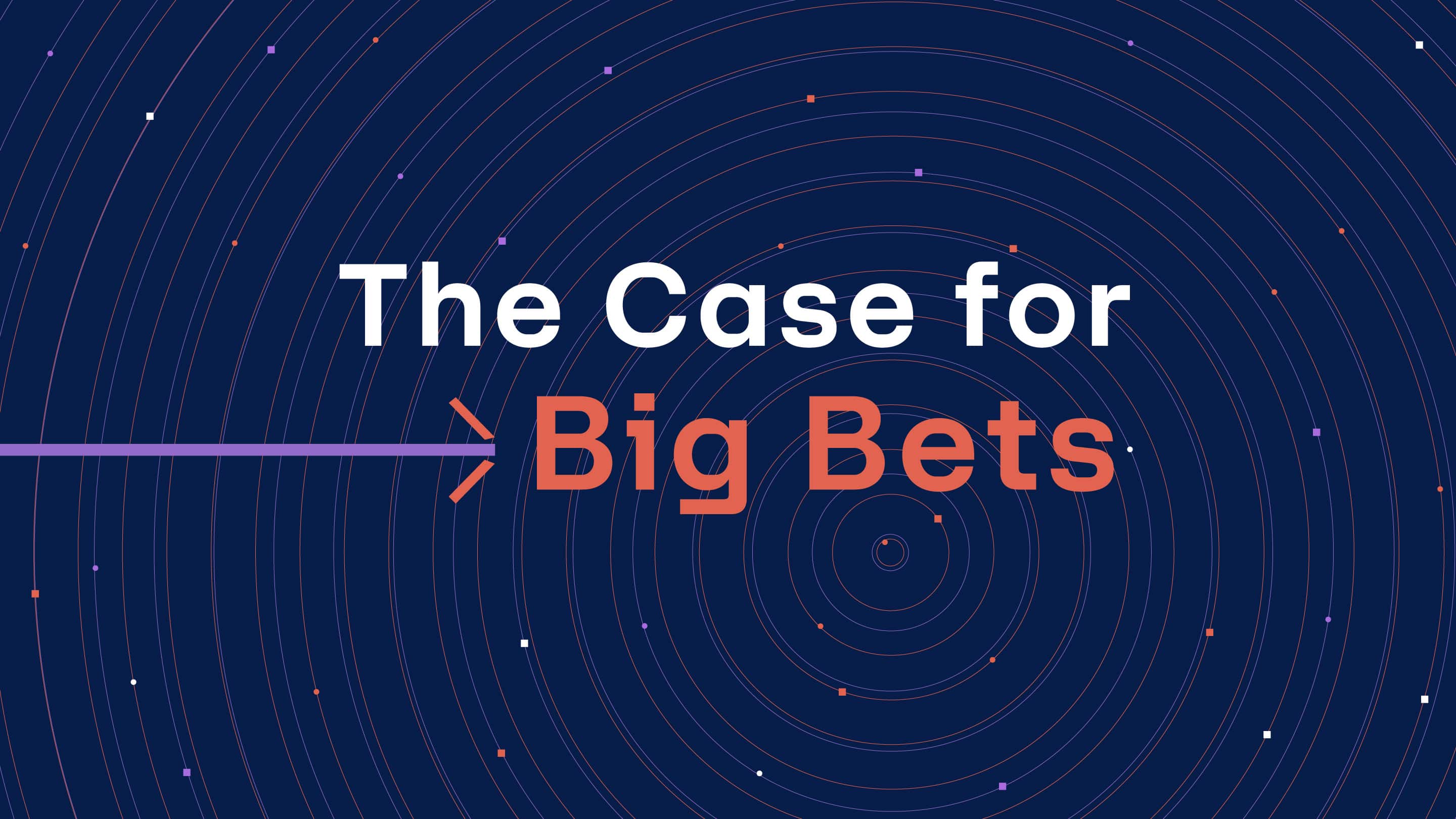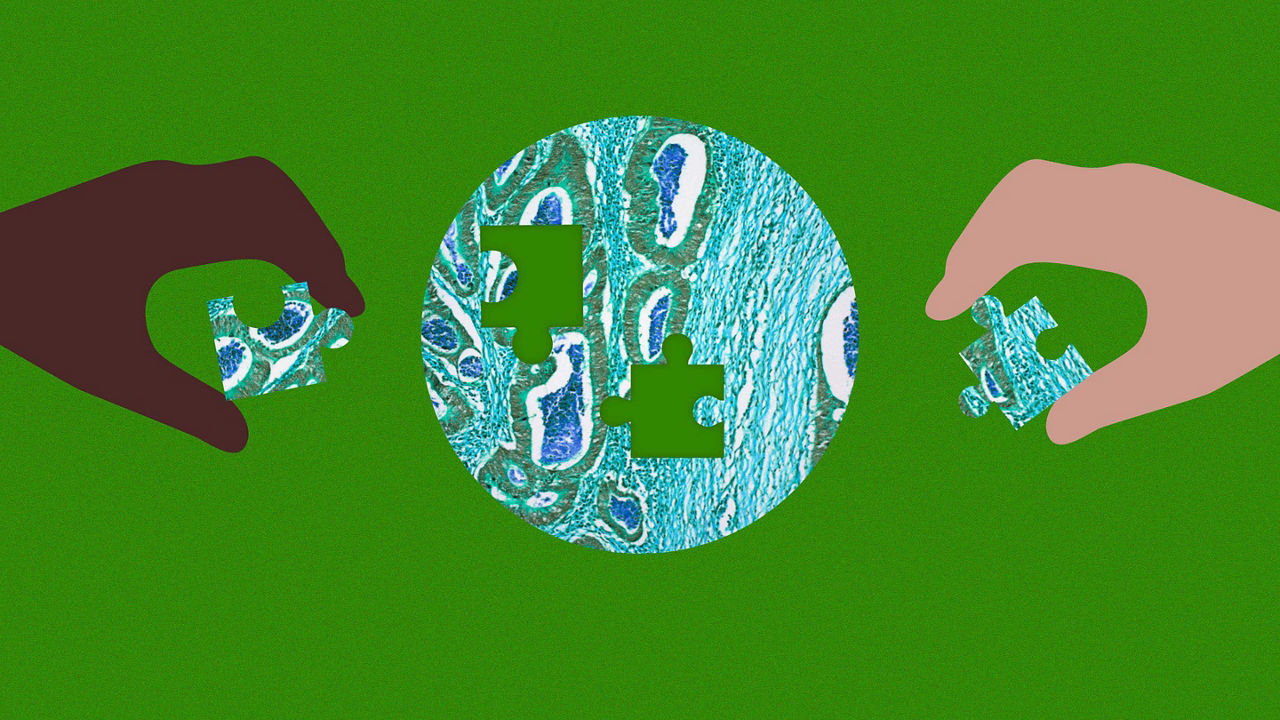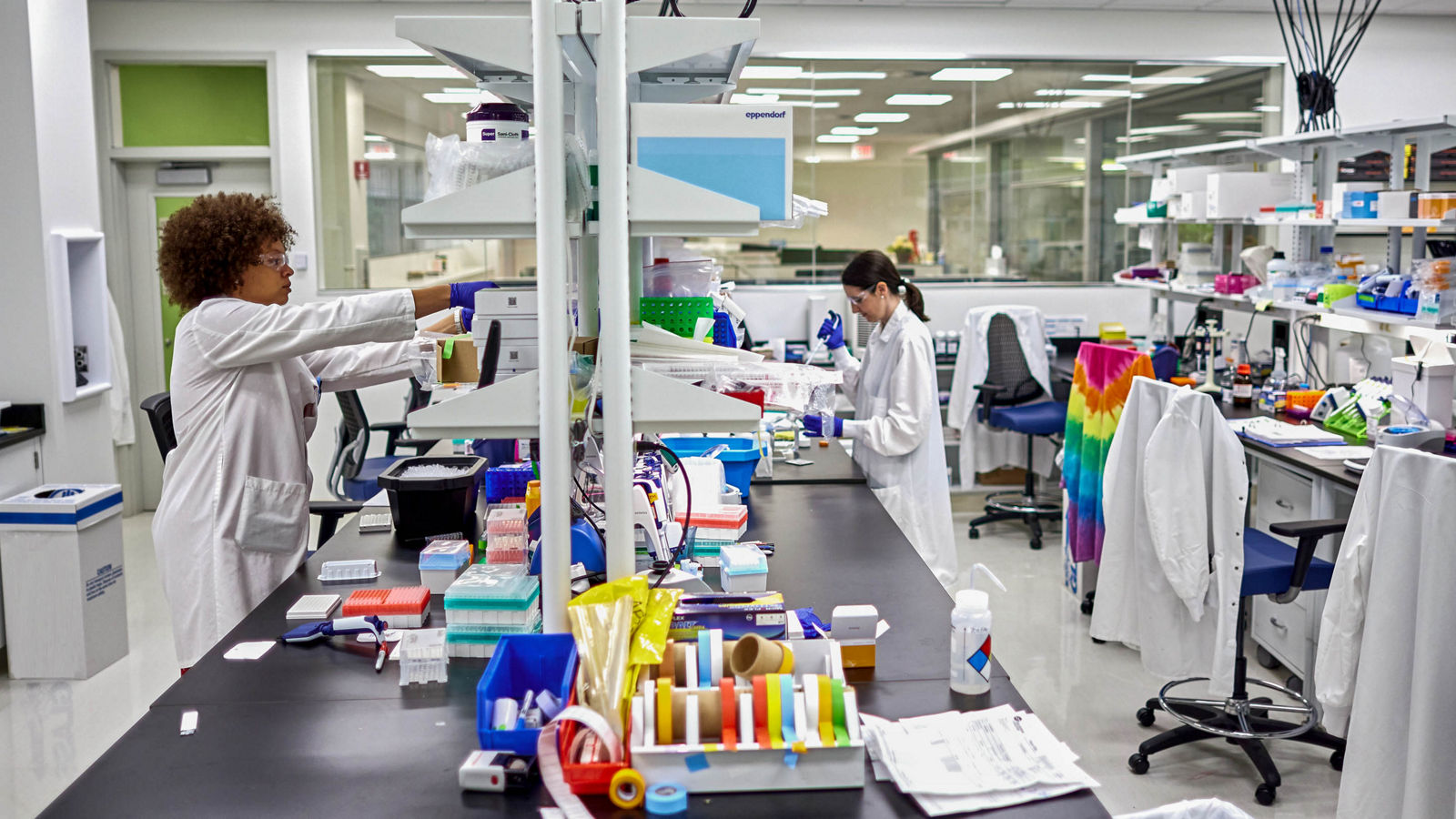Can We Find Cures Faster?
Learn how AbbVie researchers find and advance ideas that have the potential to cure.
On a mission to cure
For Seble Wagaw and other scientists at AbbVie, the chance to find a cure is the ultimate ambition.
It’s why Wagaw can still remember exactly where she was when news first came in – the early results of the phase 3 clinical trial for a hepatitis C therapy she and over 700 other scientists at AbbVie had spent years developing.
“That early read out was a sign that what we were doing was incredibly efficacious in the field,” she recalled. “From there, the race was on.”
The curative therapy, over a decade later would be attributed with treating almost 1 million patients with the hepatitis C virus.
“Developing novel medicines is hard. Most of the time, compounds don’t make it all the way through to development, so to be part of a project that made it through commercial launch to have a direct impact on so many patients is incredible,” she said.
Wagaw and thousands of other researchers at AbbVie strive for moments like this, opportunities to chase big ideas and learn from failures along the way to ultimately deliver therapies that can potentially cure patients. Read on to learn more about what AbbVie is doing to empower these teams to seek out and advance ideas with curative potential.
Defining cures within AbbVie
The chance to discover a drug that can cure disease, and profoundly impact human health, is why researchers like Wagaw chose to work in pharmaceuticals. But realizing this goal not only demands great passion and talent on their part, but also strong collaboration among scientists of all different disciplines.
To work together effectively in finding cures, researchers need a clear and shared understanding of what a cure means. But the definition and meaning looks different from one therapeutic area to the next based on a range of factors, such as the degree of the molecular response, time on treatment or in-between treatments, or the extent to which a therapy can restore function.
To address this issue, researchers at AbbVie have rallied to define cures for each of the company’s core therapeutic areas and conduct assessments to understand and characterize “what it takes” to develop them. More broadly, the company has also established a broader definition of cures within a continuum of treatment options.
One end of the continuum acknowledges therapies that offer more modest improvements over existing standards of care. Further along the path are therapies that can deliver more significant improvements over current standards of care and demonstrate an ability to modify disease activity. Even further along are solutions that are closest to what we commonly think of as cures: therapies that enable patients to live treatment-free and disease/infection-free after treatment.
To further support the development of cures, AbbVie has also established a new role within R&D, titled Head of R&D Cures, to champion the company's cures strategy and add value to AbbVie's current and future portfolio by ensuring the company makes the most of assets with curative potential. Occupying that role is Jochen Salfeld, Ph.D., vice president of virology discovery research, AbbVie.
“What we all ultimately want is a cure, and to realize that goal we must continue to push our organization to think and dream big about how to move from making incremental improvements to making cures,” says Salfeld.
Accelerating cures by understanding the drivers of disease
Gaps in our understanding of what causes complex diseases like cancer and autoimmune disease is one of the roadblocks to finding cures. So as part of AbbVie’s strategy to find cures faster, the company works to remove this roadblock by strategically investing in genetics and genomics research, precision medicine, and advanced technologies.
These capabilities serve to expand researchers’ understanding of the molecular processes and pathways that drive disease, including how they change as diseases progress and vary among patients. And by knowing the right gene, proteins or other molecules that play a causal role, researchers can potentially find the right levers to pull to stop a given disease in its tracks.
Genetics and genomics research capabilities enable researchers to better understand the function of genes, how they interact and how variations contribute to how patients respond to therapies. Meanwhile, the field of precision medicine empowers researchers to leverage diagnostic tests and molecular data across different patient profiles to drive the delivery of more targeted therapies. And, through data convergence, and AbbVie’s R&D Convergence Platform (ARCH), researchers now have the ability to bring together different types of data – including genomic data, clinical trial data and data from scientific publications – to generate new insights.
“With ARCH, we’re able to learn new things about disease definitions, discover new indications, and take a deeper look into understanding the molecular underpinning of a disease,” says Howard Jacob, vice president and head of genomics and data integration, AbbVie.
Advancing ideas with curative potential
Through an initiative known as R&D Pathways to Cures, researchers in R&D have also worked together to identify programs they believe to have curative potential – across therapeutic areas such as oncology, immunology, virology and neuroscience.
One program focuses on the unmet need in HIV. People living with this disease have an altered immune system, and rely on medications known as antiretrovirals (ARTs) to help stop the virus from replicating. But even while on these medications, a reservoir of the virus persists within patients’ body, which can drive chronic inflammation and other comorbidities.
AbbVie’s research program, currently in phase 2 clinical trials, seeks to suppress the virus’ ability to replicate by using two different antibodies to help enhance the body’s own immune response to the virus. Unlike ARTs, which patients must take daily for the rest of their lives, these antibodies are being studied to administer for a limited duration.
“Current therapies require HIV patients to remain on lifelong treatment, but our goal with this therapeutic approach is to find a treatment option of fixed duration that could suppress the virus to low enough levels such that patients will not need ARTs for an extended period of time,” Preethi Krishnan, scientific director, precision medicine specialty, AbbVie.
Programs such as this exist in varying stages of development and use different approaches across a range of diseases; while some may look at novel individual or combination therapies, others may explore repurposing existing medicines, advancing genetic medicine solutions or targeting different mechanisms of delivery. And because they vary, each program has a unique support network, different from the typical pipeline process, to advance each novel idea.
“With these programs, we seek to provide much more flexibility in the development path so we can learn more through clinical experimentation and thereby develop scenarios for each of these programs to uncover their potential,” says Salfeld.
Inspiring new ideas with curative potential
To ensure teams continue to think big and deliver new ideas with curative potential, Pathway to Cures also works to instill a curative mindset across R&D by challenging how teams think about and solve problems through hackathons and an annual Innovation Challenge. In the challenge, cross-functional teams pitch new research ideas that could ultimately be a cure.
Together these programs tap into AbbVie’s diverse, world-class scientific talent and create venues for cross-functional collaboration in the pursuit of novel therapeutics. Across both, over 72 curative ideas have come forward, with participation from over 250 AbbVie scientists and employees in the first three years. Winners gain additional funding, recognition and support within R&D to help advance their projects.
650+
global participants
in the Innovation
Challenge
250+
participants in Pathway to Cures
Hackathons, strengthening ideas
and networks across R&D
“With the new capabilities we have in place, the programs we’re advancing with curative potential, and the shared passion and focus across all our teams, the chance to deliver cures has never been closer,” says Salfeld. “What was previously a once-in-a-lifetime moment, will hopefully become a reality for every scientist at AbbVie and importantly, the patients our therapies aim to help.”
Media inquiries:
[email protected]




